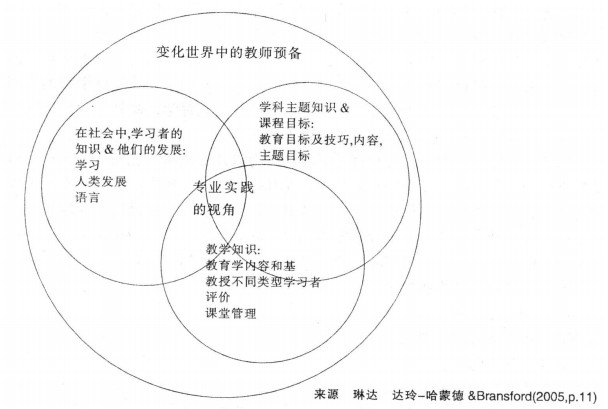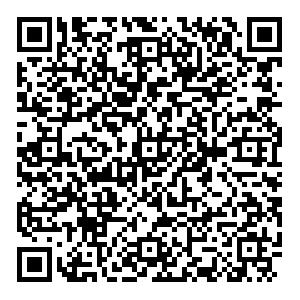|
[1]
|
Abdal-Haqq, I. (1998).Professional development schools: Weighing The evidence.Thousand Oaks, CA: Corwin Press.
|
|
[2]
|
Ball, D.L., & Bass, H. (2000).Interweaving content and pedagogy in teaching and learning to teach: Knowing and usingmaThe matics.In J.Boaler (Ed.), Multiple perspectives on The teaching and learning of maThe matics (pp.83-104).Westport, CT: Ablex.
|
|
[3]
|
Ball, D.L., & Cohen, D.C. (1999).Developing practice, developing practitioners: Toward a practice-based The ory of pro-fessional education.In L.Darling-Hammond & G.Sykes (Eds.), Teaching as The learning profession: Handbook of policy andpractice (pp.3-32).San Francisco: Jossey-Bass.
|
|
[4]
|
Baumgartner, F., Koerner, M., & Rust, F. (2002).Exploring roles in student teaching placements.Teacher EducationQuarterly, 29, 35-58.
|
|
[5]
|
Benner, A.D. (2000).The cost of teacher turnover.Austin: Texas Center for Educational Research.
|
|
[6]
|
California State University. (2002).First system wide evaluation of teacher education programs in The California State Universi-ty: Summary report.Long Beach, CA: Office of The Chancellor.
|
|
[7]
|
Carnegie Forum on Education and The Economy Task Force on Teaching as a Profession. (1986).A nation prepared: Teachersfor The 21st century.New York: Carnegie Foundation.
|
|
[8]
|
Darling-Hammond, L. (2001).The challenge of staffing our schools.Educational Leadership, 58 (8), 12-17.
|
|
[9]
|
Darling-Hammond, L. (Ed.). (2005).Professional development schools: Schools for developing a profession (2nd ed.).New York: Teachers College Press.
|
|
[10]
|
Darling-Hammond, L., & Bransford, J. (with LePage, P., Hammerness, K., & Duffy, H.). (2005).Preparing teachersfor a changing world: What teachers should learn and be able to do.San Francisco: Jossey-Bass.
|
|
[11]
|
Darling-Hammond, L., & Sykes, G. (2003).Wanted: Anational teacher supply policy for education: The right way to meetThe "highly qualified teacher"challenge.Educational Policy Analysis Archives, 11 (33).Retrieved from http://epaa.asu.edu/epaa/v11n33/
|
|
[12]
|
Denton, J.J. (1982).Early field experience influence on performance in subsequent coursework.Journal of Teacher Educa-tion, 33 (2), 19-23.
|
|
[13]
|
Flexner, A., & Pritchett, H.S. (1910).Medical education in The United States and Canada: A report to The Carnegie Foun-dation for The Advancement of Teaching.New York: Carnegie Foundation for The Advance of Teaching.
|
|
[14]
|
Fullan, M. (1993).Why teachers must become change agents.Educational Leadership, 50 (6), 12-17.
|
|
[15]
|
Gallego, M.A. (2001).Is experience The best teacher-The potential of coupling classroom and community-based field expe-riences.Journal of Teacher Education, 52 (4), 312.325.
|
|
[16]
|
Gideonse, H. (1993).The governance of teacher education and systemic reform.Educational Policy, 7 (4), 395-426.
|
|
[17]
|
Goodlad, J.I. (1990).Teachers for our nation's schools.San Francisco: Jossey-Bass.
|
|
[18]
|
Goodlad, J.I. (1994).Educational renewal: Better teachers, better schools.San Francisco: Jossey-Bass.
|
|
[19]
|
Goodlad, J.I., Soder, R., & Sirotnik, K.A. (1990).Places where teachers are taught.San Francisco: Jossey-Bass.
|
|
[20]
|
Grossman, P.L., Smagorinsky, P., & Valencia, S. (1999).Appropriating tools for teaching English: A The oretical frame-work for research on learning to teach.American Journal of Education, 108 (1), 1-29.
|
|
[21]
|
Grossman, P.L., & Stodolsky, S.S. (1995).Content as context: The role of school subjects in secondary school teaching.Educational Researcher, 24 (8), 5-11, 23.
|
|
[22]
|
Guadarrama, I.N., Ramsey, J., & Nath, J.L. (Eds.). (2002).Forging alliances in community and thought: Research inprofessional development schools.Greenwich, CT: Information Age.
|
|
[23]
|
Hammerness, K., Darling-Hammond, L., & Shulman, L. (2002).Toward expert thinking: Howcase-writing contributesto The development of The ory-based professional knowledge in student-teachers.Teaching Education, 13 (2), 221-245.
|
|
[24]
|
Henke, R., Chen, X., & Geis, S. (2000).Progress through The teacher pipeline: 1992-93college graduates and elementa-ry/secondary school teaching as of1997.Washington, DC: U.S.Department of Education, National Center for Education Statis-tics.
|
|
[25]
|
Henry, M. (1983).The effect of increased exploratory field experiences upon The perceptions and performance of student teachers.Action in Teacher Education, 5 (1-2), 66.70.
|
|
[26]
|
Holmes Group. (1986).Tomorrow's teachers: A report of The Holmes Group.East Lansing, MI: Author.
|
|
[27]
|
Holmes Group. (1990).Tomorrow's schools: Principles for The design of professional development schools: Executive summary.East Lansing, MI: Author.
|
|
[28]
|
Howey, K.R., & Zimpher, N.L. (1989).Profiles of preservice teacher education: Inquiry into The nature of programs.Al-bany: State University of New York Press.
|
|
[29]
|
Jackson, P.W. (1974).Life in classrooms.New York: Holt, Rinehart & Winston.
|
|
[30]
|
Kennedy, M. (1999).The role of preservice teacher education.In L.Darling-Hammond & G.Sykes (Eds.), Teaching asThe learning profession: Handbook of policy and practice (pp.54-85).San Francisco: Jossey-Bass.
|
|
[31]
|
Lampert, M., & Ball, D.L. (1998).Teaching, multimedia, and maThe matics: Investigations of real practice.New York: Teachers College Press.
|
|
[32]
|
Lortie, D.C. (1975).Schoolteacher: A sociological study.Chicago: University of Chicago Press.
|
|
[33]
|
Luczak, J. (2004).Who will teach in The 21st century-Beginning teacher training experiences and attrition rates.
|
|
[34]
|
National Commission on Teaching and America's Future. (2003).No dream denied: A pledge to America's children.Washington, DC: Author.
|
|
[35]
|
Patterson, R.S., Michelli, N.M., & Pacheco, A. (1999).Centers of pedagogy: New structures for educational renewal.San Francisco: Jossey-Bass.
|
|
[36]
|
Ross, S.M., Hughes, T.M., & Hill, R.E. (1981).Field experiences as meaningful contexts for learning about learning.Journal of Educational Research, 75 (2), 103-107.
|
|
[37]
|
Shields, P.M., Humphrey, D.C., Wechsler, M.E., Riel, L.M., Tiffany-Morales, J., Woodworth, K., et al. (2001).The status of The teaching profession2001.Santa Cruz, CA: Center for The Future of Teaching and Learning.
|
|
[38]
|
Shulman, L.S. (1987).Knowledge and teaching: Foundations of The newreform.Harvard Educational Review, 57 (1), 1-22.
|
|
[39]
|
Shulman, L.S. (1996).Just in case: Reflections on learning from experience.InK.T.J.Colbert, P.Desberg, & K.Trimble (Eds.), The case for education: Contemporary approaches for using case methods (pp.197-217).Boston: Allyn & Ba-con.
|
|
[40]
|
Sunal, D.W. (1980).Effect of field experience during elementary methods courses on preservice teacher behavior.Journal ofResearch in Science Teaching, 17 (1), 17-23.
|
|
[41]
|
Tatto, M.T. (1996).Examining values and beliefs about teaching diverse students: Understanding The challenges for teachere ducation.Educational Evaluation and Policy Analysis, 18 (2), 155-180.
|
|
[42]
|
Trachtman, R. (1996).The NCATE professional development school study: A survey of28PDS sites.Washington, DC: Na-tional Council for Accreditation of Teacher Education.
|
|
[43]
|
U.S.Department of Education. (2002, June).Meeting The highly qualified teachers challenge: The secretary's annual reporton teacher quality.Washington, DC: Office of Postsecondary Education.
|
|
[44]
|
Wideen, M., Mayer-Smith, J., & Moon, B. (1998).A critical analysis of The research on learning to teach: Making The case for an ecological perspective on inquiry.Review of Educational Research, 68 (2), 130-178.
|
|
[45]
|
Zeichner, K.M., & Gore, J. (1990).Teacher socialization.In W.R.Houston, M.Haberman, J.P.Sikula, & Associa-tion of Teacher Educators (Eds.), Handbook of research on teacher education (pp.329-348).New York: Macmillan.
|
|
[46]
|
Zeichner, K.M., & Liston, D.P. (1996).Reflective teaching: An introduction.Mahwah, NJ: Lawrence Erlbaum.
|






 下载:
下载:
